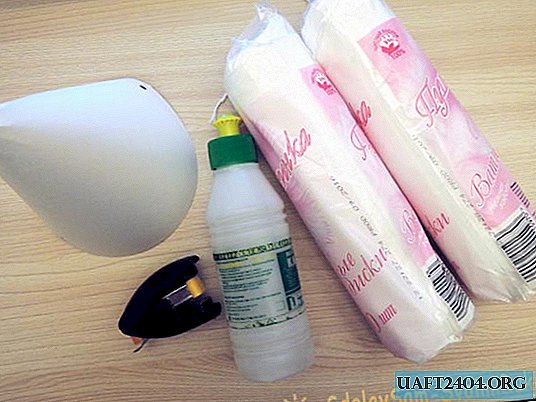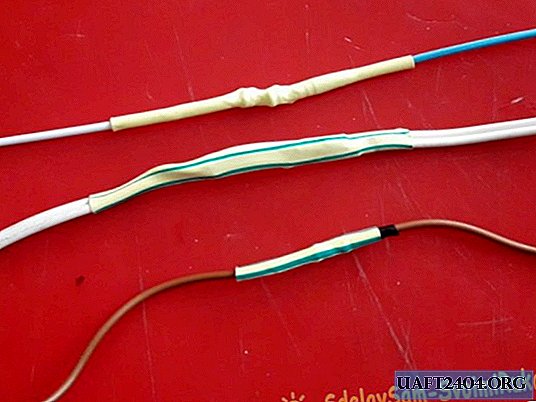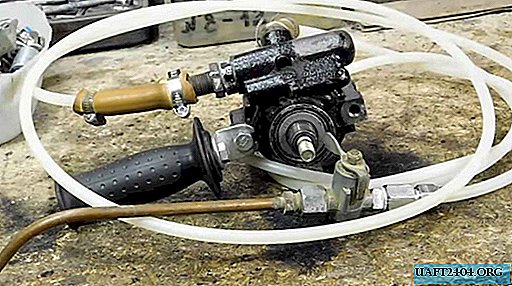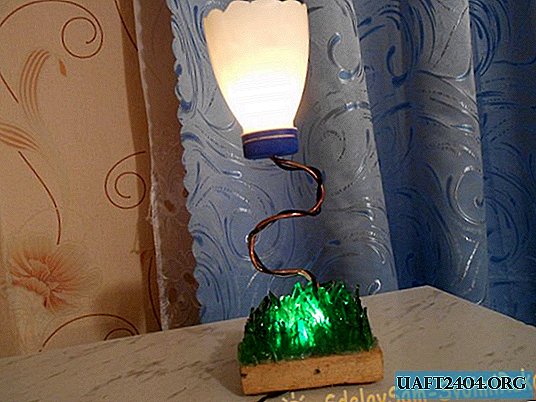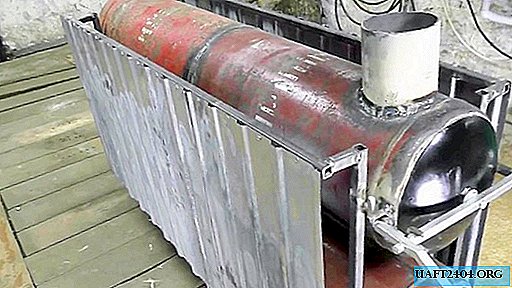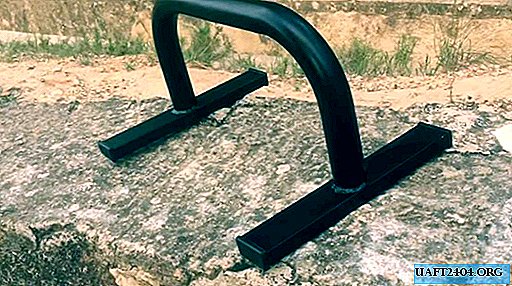Share
Pin
Tweet
Send
Share
Send
The solar battery is a device for converting the energy of the sun into electricity. The high performance solar panels you can buy at Radio Shack and other stores are made of specially treated silicon and require huge factories, high temperatures, special cleaning and lots of money.
If we wish to sacrifice efficiency for the ability to make our own solar panels in the kitchen from materials from a hardware store, we can demonstrate a working solar panel in about an hour.
Our solar panel is made of copper oxide instead of silicon. Copper oxide is one of the first materials in which scientists discovered the photoelectric effect, in which light causes electricity to flow in the material.
Thoughts on how to explain the photoelectric effect is what led Albert Einstein to the Nobel Prize in physics and to the theory of relativity.
Materials
1. A sheet of copper from a hardware store. It usually costs about 150 rubles. for 0.9 square meters. We need about 45 sq. cm.
2. Two crocodile clips.
3. A sensitive microammeter, which can measure the gaps between 10 and 50 microamps. Radio Shack sells small multimeters with LCD monitors, but you can use the usual one.
4. Electric oven. My kitchen stove is gas, so I bought a small electric stove with one spiral for about 750 rubles. Small 700-watt burners probably will not work - you need at least 1100 watts for the burner to turn red.
5. Plastic bottle with a cut neck. I used a 2 liter bottle of mineral water.
6. Table salt. We will need a couple of tablespoons.
7. Water from the tap.
8. Sandpaper or drill with such a nozzle (abrasive)
9. Sheet metal.
Manufacture.
Here is the burner.
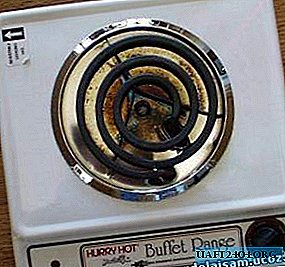
First you need to cut off a piece of copper so that it is the size of an electric stove. Wash your hands to avoid greasy or other stains. Also, wash the copper sheet with the detergent to wash off grease or other stains. Use sandpaper or an abrasive brush to completely remove the copper protective coating so that any sulfide or other light corrosion is removed.
Then put a clean copper sheet on the tile (electric) and turn it on to the maximum.

Copper will begin to heat up and oxidize, you will see beautiful red-orange spots on its surface.

When the copper heats up even more, the multi-colored spots will be replaced by black copper oxide.

All colors disappear when the spiral is already red.

When the burner burns, the copper sheet will be coated with black copper oxide. Let it cook for another half hour, so the black coating will be thick. This is important, as a thick coating will peel off easily, while a thin coating will remain adhered to copper.

After half an hour of cooking, turn off the burner. Leave hot copper on the burner to cool slowly. If you cool it too quickly, the black oxide film will stick to the copper.

As copper cools, it contracts. Black copper oxide also shrinks. But they are compressed at different speeds, which causes the black copper oxide to exfoliate.

Soon large pieces will fall off, it's fun to watch))

When the copper has cooled to room temperature (this takes about 20 minutes), most of the black oxide film will go away. Easy cleaning with your hands under running water will remove most of the small pieces. DO NOT ATTEMPT to peel off stubborn stains and do not bend the sheet - you can damage a thin layer of copper oxide, but we just need it
The rest of the assembly is very quick and easy.
Cut the second sheet of copper to the size of the first (heated). Carefully bend both parts so that they fit into the plastic bottle without touching each other.
Attach the crocodiles to both plates. Connect the wire from pure copper to the plus, and the wire from the plate with oxide to the minus.
Now mix a couple tablespoons of salt in a little hot tap water. Stir until all the salt has dissolved. Gently pour the mixture into the bottle (where the plates are), leaving about 2.5cm from the edges of the plates.

In the photo above, the finished solar battery IN SHADOW, the ammeter shows about 6 milliamps. But even in the dark, this battery will give several milliamps))

This photo shows the battery in the light, and the ammeter shows 34 milliamps, sometimes the battery can give 50 milliamps, or even more.
How it works?
Copper oxide is a semiconductor. It is an intermediate conductor, where electricity can flow freely, and an insulator, where electrons are strongly bonded to their atoms and do not flow freely.
There is a gap in the semiconductor called the band gap between electrons that are strongly bonded to the atom and electrons that are farther away from the atom, which can move freely and conduct electricity.
Electrons cannot stay in the forbidden zone. An electron can give only a little energy and move from the nucleus of the atom to the band gap. The electron must receive enough energy to move farther from the nucleus, outside the forbidden zone.
Similarly, an electron outside the band gap cannot lose a bit of energy and fall only a little closer to the nucleus. This should lose enough energy to fall past the forbidden zone into the region where the electrons can.
When sunlight hits electrons in copper oxide, some of the electrons receive enough energy from sunlight to jump past the forbidden zone and become free to conduct electricity.
Free electrons move into salt water, then into a clean copper plate, into a wire, through an ammeter, and back to the oxidized plate.
As the electrons move through the ammeter, we see the work (amperes). When the shadow falls on the solar battery, the electrons move slower and the milliampere is smaller.
A note about energy.
The battery produces 50 milliamps at 0.25 volts.
This is 0.0000125 watts (12.5 microwatts).
Do not try to light the bulb))) you would need acres of batteries to light the house. Our model is experimental and can be used as a light sensor.
0.0000125 watts (12.5 microwatts) for a 0.01 square meter battery, or 1.25 milliwatts per square meter. To illuminate a 100-watt bulb, it would take 80,000 square meters of copper oxide for the sunlit side, and 80,000 square meters of copper for the dark electrode. To control a 1,000-watt furnace, you would need 800,000 square meters of copper oxide and another 800,000 square meters of plain copper, or 1,600,000 square meters all together. If it were to be fixed on the roof of the house, each house would be 282 meters long and 282 meters wide, accepting everything for which they needed electricity, there was one stove.
At 1,600,000 square meters there are 17,222,256.7 square feet. If copper covering costs $ 5 per square foot, copper alone would cost $ 86,110,283.50. By doing this one tenth of the thickness can lower it to $ 8,611,028.35. Since you buy in bulk, you might get it for half of this, or about $ 4,300,000.00.
If you used silicon solar panels that cost $ 4 per watt, you could run the same furnace for $ 4,000.00. But the groups would only be about 10 square meters.
Or for about a dollar, you can build a solar furnace out of aluminum foil and cardboard. For about $ 20 you can build a very nice polished aluminum parabolic solar cooker.
Flat solar battery
I made a more portable version of the solar panel in a flat form. I used the transparent plastic cover of the CD cover as a window and silicone glue (you can use regular sealant) to attach the parts together and isolate them from each other.

First, we make oxide of copper, as in the first part. We solder an insulated copper wire to the corner of the oxide plate, this will be a minus (negative pole).

The positive plate is a U shapedly cut piece of pure copper slightly larger than oxide in size (you will understand how in the pictures below))) we solder a wire to its corner, this time plus.
First, glue the copper plate U to the plastic window. Use a lot of silicone glue, so salt water will not leak out. Make sure the solder joint is either completely covered with glue, or outside of U glue, as shown in the photo (fully coated with glue is better).
The photo below shows the back side of the solar panel (the side that does not face the sun).

The photo below shows the front of the solar panel (the side that will face the sun). Note that silicone glue does not completely cover copper, as part of the copper must ultimately be in contact with salt water.

We glue a plate of pure copper with glue. This layer will act as an insulator between the pure copper plate and the oxide plate, and should be thick enough to leave a small space for salt water. Again, not all copper is coated, so there will be a lot of copper in contact with water.
Gently glue the oxide plate onto this layer. You have to press hard enough to make sure that the glue surrounds any gaps, but not so much that the two plates touch.
The photo below shows the back side of the solar panel (the side that does not face the sun).

The photo below shows the front of the solar panel (the side that will face the sun). Note that I added extra glue to form a pipe on top so that it is like pouring salt water.

The photo does not show additional glueing around the perimeter, so that the water could not leak at all, but you must do it. Let the glue dry before proceeding to the next step.
Then, use a large dropper to add salt water. Fill the battery almost to the top of the copper plate so that the water almost spills out. Then seal the hole with a drop of glue and allow the glue to dry for at least half an hour.

In the photo above you can see a flat solar panel in action in bright sunshine. It gives about 36 microamps. You can also see an extra bead of glue around the edges of the plates, and the filling of the top of the pipe.

Finally, in another photo, the author’s shadow. Note that the ammeter now displays approximately 4 microamps, since no sunlight falls on it.
Source: samodelka.ucoz.ru
Share
Pin
Tweet
Send
Share
Send

